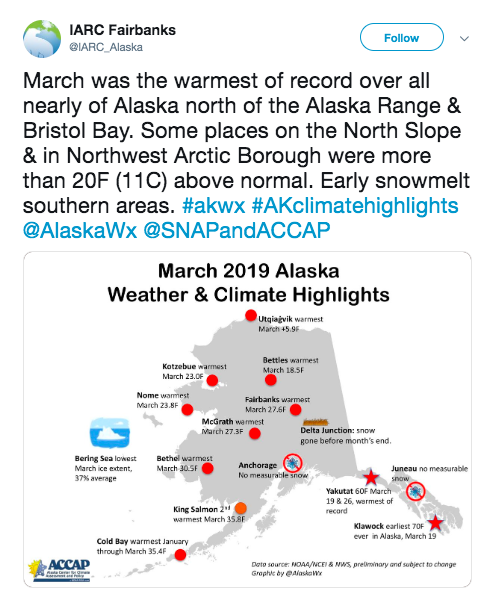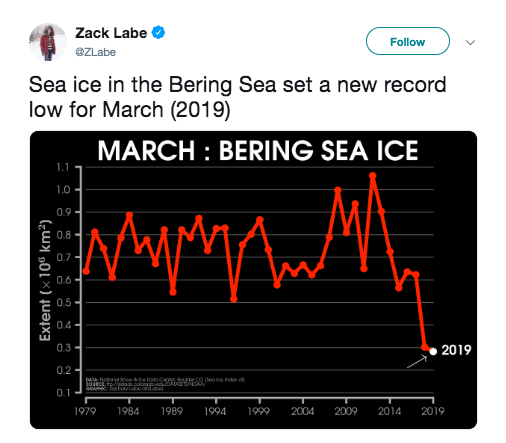
For most people, a mild end to the long winter is a blessing, but for the people of Alaska, it may be too much of a good thing. Temperatures in Alaska reached record highs for the month of March — with an unprecedented 70-degree day in the Southeastern town of Klawock on March 19 — the earliest any spot in the state has hit that high. — beating the previous first warm day by almost a month. And this is compared to many parts of the continental U.S. such as Boston still looking for its first 70-degree day, and Anchorage regularly warmer than many spots in the Plains of the Midwest. The Washington Post’s Capital Weather Gang broke down the historically warm temperature records this way:
- “Juneau, in the southeast, saw an astounding 10 daily record highs. The city closed the month of March with seven days in row of record highs, from the 25th through the 31st. The 59-degree record high there on March 31 was the second-warmest reading on record for the month.”
- “Utqiaġvik (formerly Barrow), in the northernmost tip of the United States, the thermometer rose above freezing for the third time on record in March, when it hit 33 on March 30. It ended up the warmest March on record there by more than six degrees.”
- “Fairbanks notched its warmest March, with an average temperature more than 15 degrees above normal.”
- “Deadhorse, on the coast in northeast Alaska, just went through a week-long stretch of temperatures more than 30 degrees above normal. On Saturday, it was 40 degrees above normal, a monthly record for that location, per Thoman.”
Making matters worse, Anchorage had no snow accumulation during March either, and although Southern Alaska was not as warm as the rest of the state, it is experiencing a long-lasting drought. Finally, Bering Sea ice levels are again at their lowest ever (see graphic below), which is leading climate scientists to conclude that previous low sea ice records were not anomalies.
Why This Matters: Alaska is warming faster than any other state, with devastating impacts for the way of life in the region. It will mean loss of permafrost that many native Alaskans use as “freezer” storage, will change wildlife migration patterns impacting subsistence fishing and hunting, and the weather pattern “stuck” over the region has also caused unusual storminess over parts of the state and in the Bering Sea. As we have said repeatedly, the evidence that climate change is here, and causing many problems beyond catastrophic weather disasters, continues to mount. We need to aggressively adapt in Alaska and that will take federal help — help that a large green infrastructure mobilization like the Green New Deal could provide.

April 5, 2019 » Alaska, Arctic, climate change, high temperature, record, weather


